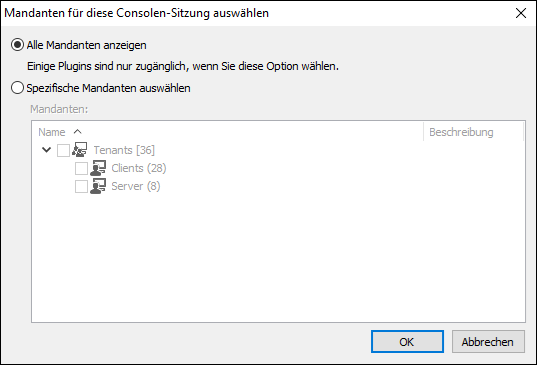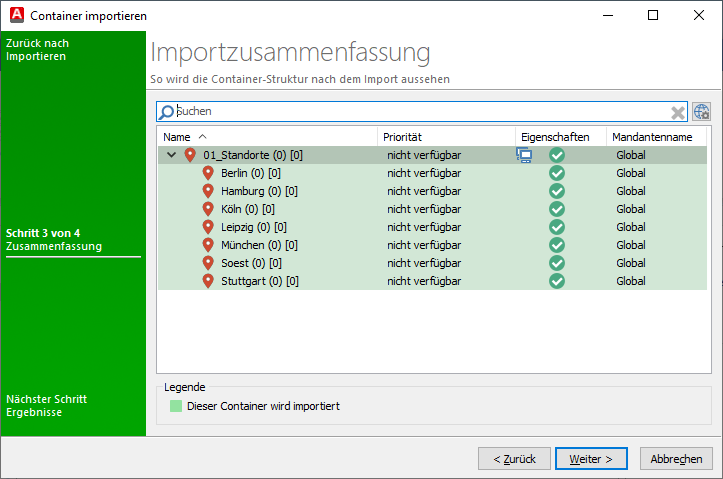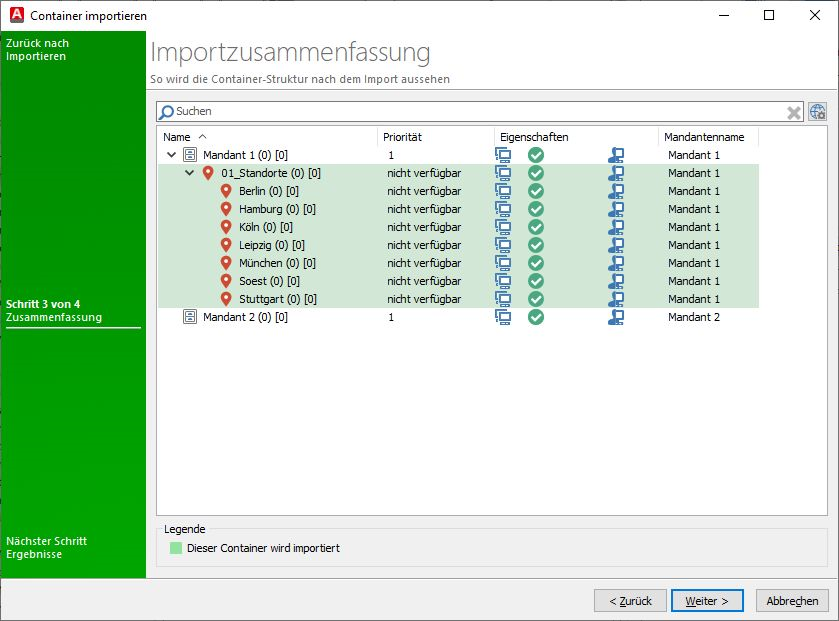Importing and exporting Containers
With ACMP version 6.7, it is possible to import and export containers. This function allows you to export container structures once they have been set up and import them into other environments. This allows you to quickly set up new container structures based on templates and integrate them into your system.
Requirements for the import and export of Containers:
Please note the following requirements that must be met in order to use the function:
- The import and export functionality of Containers is only available in the Container plugin (Client Management > Container).
- To be able to use the function of importing and exporting Containers, the right must be explicitly granted in a group via the User Management. To do this, enable the Export and Import Containers checkbox (User Management > Rights of group > Client Management > Container > Export and Import Containers).
- Importing and exporting is only permitted for client administrators. For users who are not logged in as a multi-tenant administrator, the buttons are disabled and greyed out (see Export and import with multi tenancy)
Export and import with multi tenancy
Basically, the multi tenancy allows you to create tenants and assign ACMP Clients and ACMP Users to them. This mapping means that users only see and manage the clients of their own tenants. Only client administrators are allowed to import and export Containers. To do this, the option Select tenants for this console session must already be selected during login to the ACMP Console: Display all tenants must be selected in order to see this later.

Select tenants for the console session
The classification of the import is as follows: The tenant of the Container into which the import is made is adopted. If you import at root level, the tenant becomes global by default. In the following illustration, you can see the import summary of a container structure that has been inserted at root level and has been assigned the client assignment Global.

Example of an import summary at root level (global tenant)
If the import is assigned to an existing container of a tenant, it is assigned to the same tenant as the parent container. In this case, it adopts the container-tenant relationship and is assigned the same one (see the following illustration and the assignment of tenant 1).

Import summary for tenant 1
Continue by exporting your Container structure or importing existing Containers.


